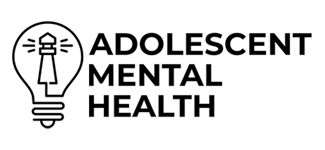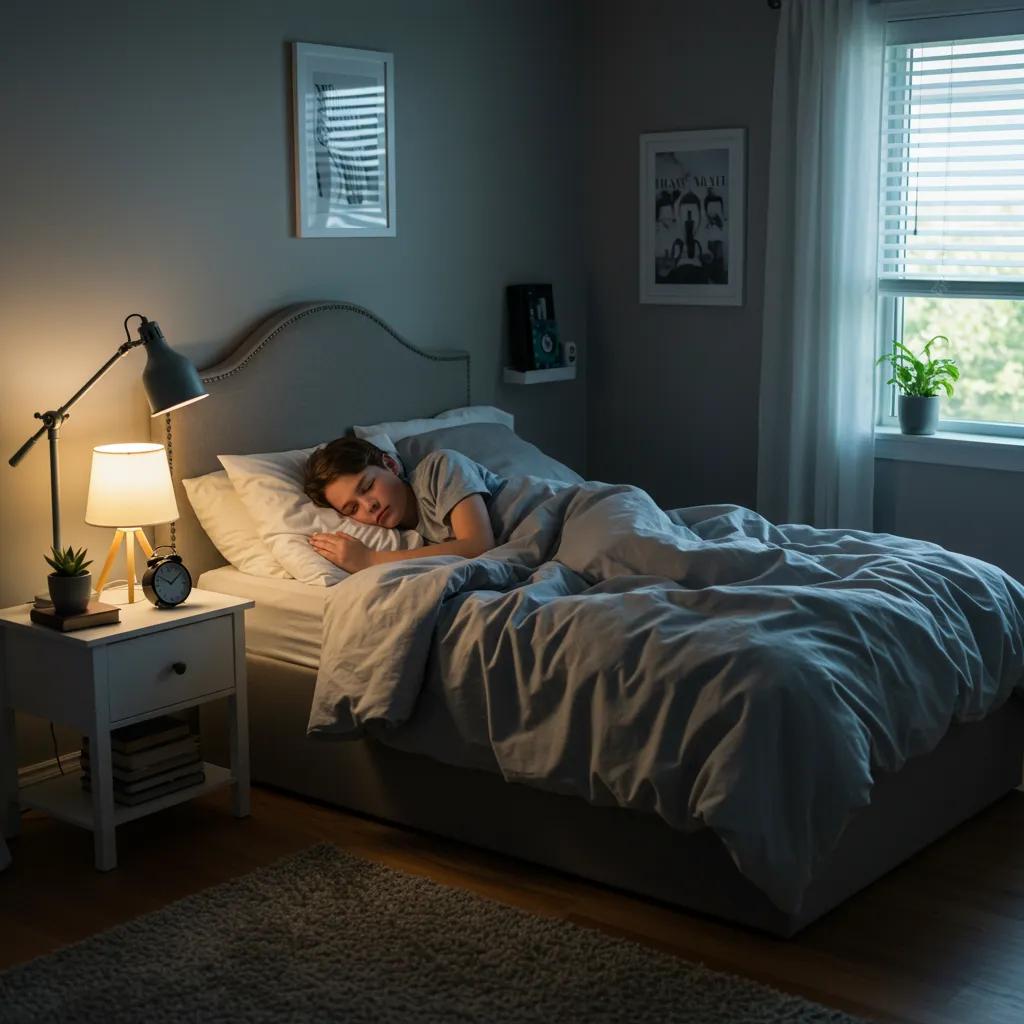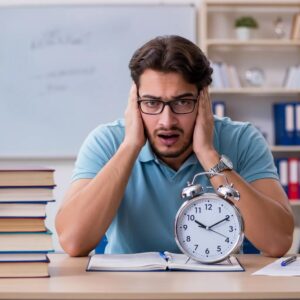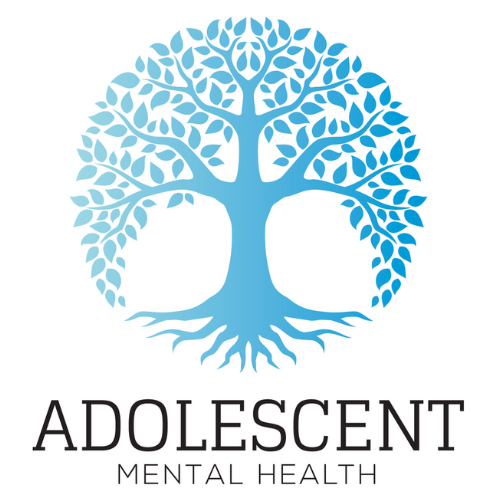ADHD and Sleep Problems in Teens: How to Fix the Late-Night Cycle and Improve Rest
Many teenagers with ADHD struggle to fall asleep, stay asleep, or wake rested because attention and arousal systems interact directly with the sleep-wake cycle. This article explains why ADHD disrupts adolescent circadian rhythms, identifies common sleep disorders that co-occur with ADHD, and lays out practical steps parents and clinicians can use to reset a late-night pattern.
You will learn neurobiological reasons (circadian delay, dopamine-related arousal), behavioral drivers (racing thoughts, screen use), and targeted interventions (sleep hygiene, CBT-I adaptations, medication timing). The guide also maps actionable parental supports and describes how structured virtual programs can deliver evidence-based therapies for teens. Throughout, we use current research perspectives and clear how-to steps so families can start shifting schedules and seeking help when problems persist.
Why Do Teens with ADHD Struggle with Sleep?
ADHD increases the risk of sleep disruption through linked neurobiological and behavioral mechanisms that delay sleep onset and fragment sleep architecture. Dopamine dysregulation and a tendency toward delayed circadian timing make it harder for many adolescents with ADHD to feel sleepy at conventional bedtimes, producing a persistent late-night pattern. Comorbid anxiety or depression commonly amplifies nighttime rumination and nighttime awakenings, worsening daytime impairment and school functioning. Understanding these mechanisms makes it easier to choose targeted interventions that address both biology and behavior.
Recent research highlights the significant connection between sleep disturbances and the development and treatment of mental health conditions in young people, including ADHD.
Sleep Problems and Circadian Clocks in Adolescent ADHD
1. A more recent branch of research describes the importance of sleep problems in the development and treatment of mental disorders in children and adolescents, such as attention-deficit hyperactivity disorder (ADHD) and mood disorders (MD).Research about clock genes has continued since 2012 with a focus on metabolic processes within all parts of the mammalian body, but particularly within different cerebral regions. Research has focused on complex regulatory circuits involving clock genes themselves and their influence on circadian rhythms of diverse body functions.
Current publications on basic research in human and animal models indicate directions for the treatment of mental disorders targeting circadian rhythms and mechanisms. The most significant lines of research are described in this paper.
The role of sleep problems and circadian clock genes in attention-deficit hyperactivity disorder and mood disorders during childhood and adolescence: an update, C Berger, 2017
How Does ADHD Affect Teen Sleep Patterns and Circadian Rhythm?
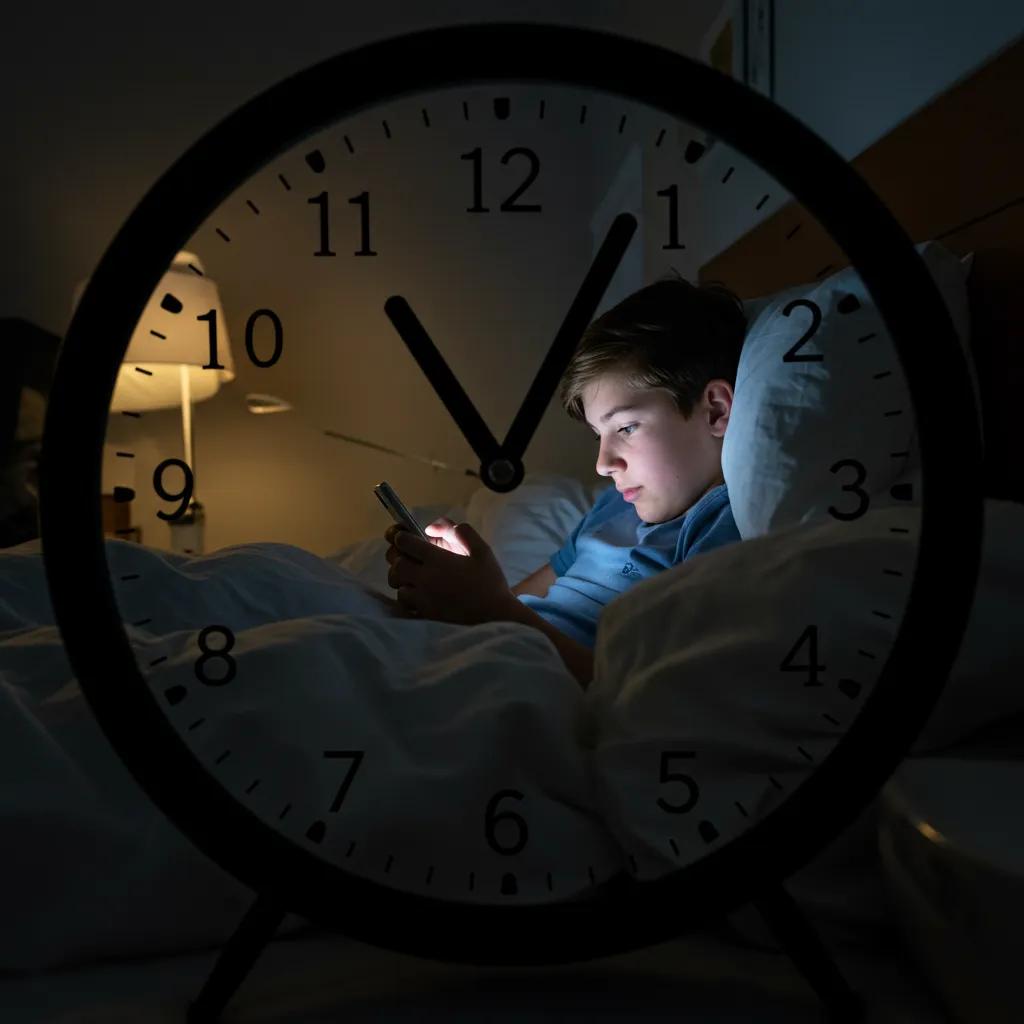
ADHD often coincides with delayed sleep phase characteristics, meaning the internal clock signals sleepiness later in the night than expected and wakefulness lingers into the morning. Neurotransmitter differences—especially involving dopamine and arousal systems—make transitions into sleep less automatic, producing longer sleep latency and irregular sleep timing. A typical scenario is a teen who focuses on stimulating activities at night and then cannot wind down until very late, leading to chronic sleep restriction on school nights. Addressing circadian cues and reducing evening stimulation helps shift timing back toward healthy sleep windows.
What Common Sleep Disorders Impact Teens with ADHD?
Several sleep disorders overlap with ADHD symptoms and complicate diagnosis and treatment in adolescents. Insomnia presents as difficulty falling or staying asleep and often results from bedtime arousal or poor routines, while Delayed Sleep Phase Syndrome shows consistent late sleep onset and early-morning struggle. Restless legs syndrome and periodic limb movements can fragment sleep, and sleep-disordered breathing disrupts architecture and daytime attention. Because symptoms overlap, coordinated assessment—using sleep histories and symptom checklists—helps separate primary ADHD symptoms from sleep disorder effects.
What Are the Main Causes of Late-Night Sleep Issues in ADHD Teens?
Late-night sleep problems in teens with ADHD arise from interacting causes that affect physiology, behavior, and environment in predictable ways. Biological contributors (circadian delay, dopamine-driven arousal) combine with behavioral patterns such as irregular schedules and stimulating bedtime activities to push sleep later. Medication timing, co-occurring anxiety or depression, and evening screen use further perpetuate the cycle by increasing physiological or cognitive arousal at night. Mapping causes to effects clarifies which targets to address first when designing a sleep-reset plan.
Before the table below, note: this table maps common causes to the mechanism they trigger and the observable sleep effect; it helps parents prioritize adjustments.
| Cause | Mechanism | Observable Effect |
|---|---|---|
| Racing thoughts / rumination | Increased cognitive arousal at bedtime | Difficulty initiating sleep; long sleep latency |
| Irregular schedules | Weak circadian entrainment | Variable sleep times; daytime sleepiness |
| Evening screens | Blue light + engagement delays melatonin | Later sleep onset and alertness at night |
| Medication timing | Stimulant effects extend into evening | Trouble falling asleep; fragmented sleep |
| Comorbid anxiety/depression | Heightened arousal and awakenings | Nighttime waking and poor sleep quality |
This mapping shows how specific causes produce distinct sleep problems, enabling targeted behavioral or clinical interventions.
How Do Racing Thoughts and Hyperactivity Disrupt Sleep?
Racing thoughts and residual daytime hyperactivity create heightened bedtime arousal that interrupts the normal downshift into sleep. Physiological activation—faster heart rate, muscle tension—and cognitive rehearsal of the day or worries increase sleep latency and reduce sleep depth. Behavioral approaches like stimulus control, scheduled worry time earlier in the evening, and calming wind-down activities help reduce pre-sleep arousal and create a clearer transition to sleep. Practicing consistent wind-down habits anchors the body’s cues for sleep and reduces the momentum of late-night overactivity.
How Does Screen Time and Technology Use Affect ADHD Teen Sleep?
Evening device use delivers both blue light, which suppresses melatonin secretion, and engaging content that sustains attention and arousal into the night. For teens with ADHD, highly stimulating social media, gaming, or streaming can override internal sleep cues and train late-night habits. Practical limits—such as stopping screens 60–90 minutes before bedtime, using night-mode lighting, and placing devices outside the bedroom—reduce both physiological and psychological stimulation. These steps help re-align melatonin timing and make evenings more compatible with sleep onset.
What Effective Strategies Help Improve Sleep for Teens with ADHD?
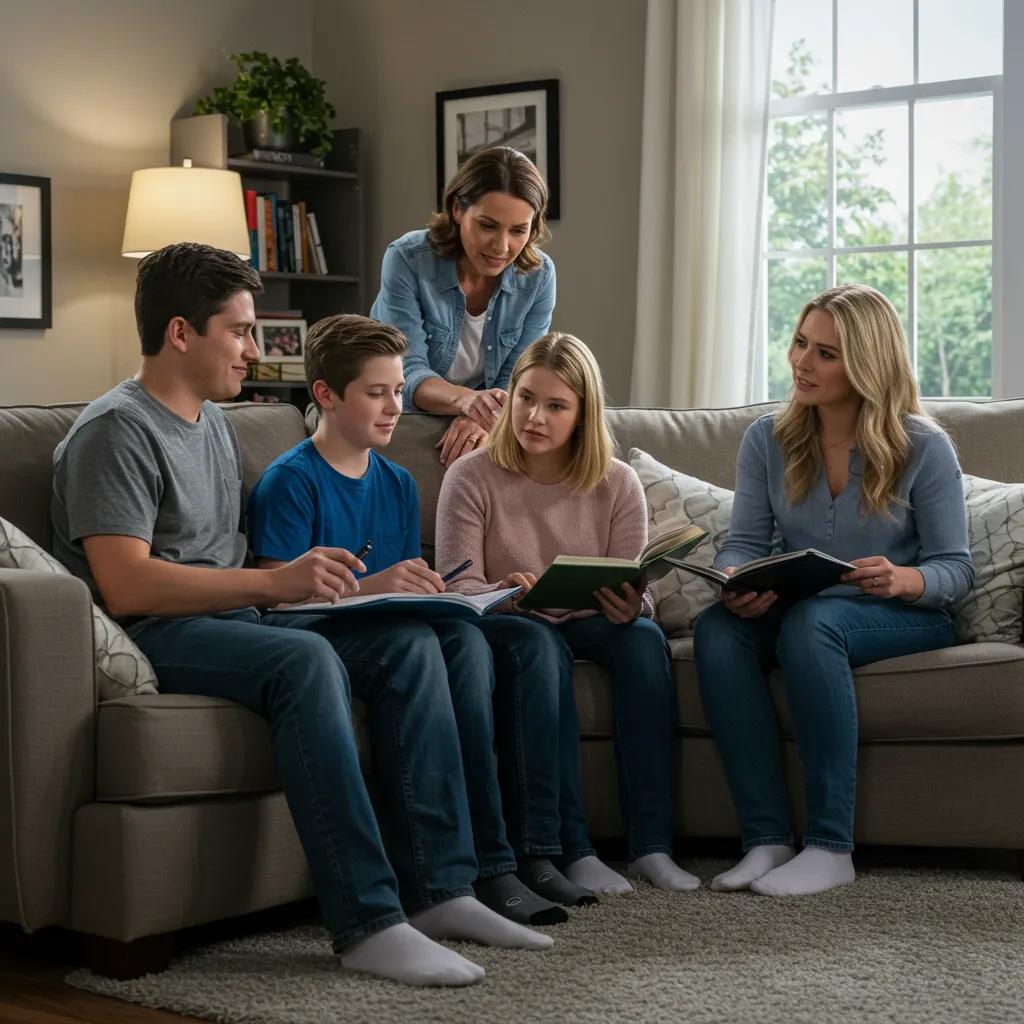
Effective sleep strategies combine consistent routines, circadian cues, cognitive-behavioral techniques, and selective medical guidance to reduce late-night timing and improve sleep quality. Behavioral changes (regular wake times, morning light) anchor circadian rhythm while stimulus-control and scheduled wind-down activities reduce arousal at bedtime. Cognitive Behavioral Therapy for Insomnia (CBT-I) and its adaptations for attentional challenges teach practical skills—sleep restriction, thought restructuring, and stimulus control—that produce lasting change. Short-term melatonin under medical guidance and careful stimulant scheduling can be useful adjuncts when behavioral strategies alone are insufficient.
These interventions compare clearly in intent and practice; the table below helps parents pick actionable starting points.
| Intervention | Intended Effect | Practical Tip |
|---|---|---|
| Sleep hygiene routines | Strengthen sleep cues and environment | Fixed wake time; dark, cool bedroom |
| CBT-I (adapted) | Reduce insomnia behaviors and thoughts | Use shorter sessions and visual tools |
| Morning light exposure | Shift circadian phase earlier | Bright light within 30–60 minutes of waking |
| Timed melatonin (clinician-guided) | Advance sleep onset on delayed phase | Low dose 1–2 hours before target bedtime |
After reviewing these options, many families start with routine and light exposure while arranging CBT-I if problems persist, because behavioral anchor points produce measurable shifts within weeks.
List: Practical strategy checklist parents can implement tonight:
- Set a consistent wake time every day, even weekends, to anchor circadian rhythm.
- Create a 60–90 minute wind-down before bed with low-stimulation activities.
- Limit screens in the hour before lights-out and remove devices from the bedroom.
How Can Consistent Sleep Routines and Sleep Hygiene Reset the Sleep Cycle?
Consistent sleep routines establish predictable cues that align biological rhythms and reduce nighttime arousal in teens with ADHD. Core components include fixed wake time, progressive wind-down, minimized evening stimulation, and a sleep-conducive environment that is cool, dark, and quiet. Morning activities and direct bright light exposure help advance circadian timing and reinforce daytime alertness, making earlier bedtimes more achievable. Repeating these steps daily stabilizes sleep timing and reduces variability that commonly perpetuates late-night schedules.
How Does Cognitive Behavioral Therapy for Insomnia Support ADHD Teens?
CBT-I targets the behaviors and thoughts that sustain insomnia through techniques such as stimulus control, sleep restriction, and cognitive restructuring, adapted for teen attention profiles. For adolescents with ADHD, clinicians shorten modules, use visual aids, and involve caregivers to maintain practice consistency and behavioral accountability. Delivered over several weeks, CBT-I reduces sleep latency and nighttime awakenings, with improvements often emerging within 4–8 weeks. Virtual delivery of CBT-I can increase access and make session scheduling easier for busy families.
Important note for families and clinicians: Provide useful information about adolescent mental health and treatment options, and encourage inquiries/admissions for their virtual mental health programs.
How Can Parents and Virtual Mental Health Programs Support Better Sleep in ADHD Teens?
Parents play a critical role in implementing routines, setting boundaries, and coordinating care; virtual programs extend that support through structured, multidisciplinary treatment delivered remotely. Practical parent actions include confirming consistent wake times, enforcing screen limits, supporting evening wind-down rituals, and collaborating with prescribers on medication timing. Virtual programs can supplement home strategies by offering evidence-based therapies, psychiatric input, and family sessions that address sleep and co-occurring conditions in a coordinated way. When home changes are insufficient, structured virtual care provides intensity and professional oversight.
Parents can start with these immediate actions to support sleep:
- Monitor and enforce consistent sleep-wake times.
- Set household screen rules that remove devices from bedrooms at night.
- Keep a brief sleep diary noting bedtimes, wake times, and daytime function to share with clinicians.
What Role Does Adolescent Mental Health’s Virtual Intensive Outpatient Program Play?
Adolescent Mental Health offers a Virtual Intensive Outpatient Program (IOP) that provides structured, evidence-based care for teens aged 12–17 who need coordinated treatment for ADHD, insomnia, anxiety, or depression. The program features 9–15 hours of online therapy across 3–5 days weekly, including individual, group, and family therapy along with psychiatric care and evidence-based modalities such as CBT and DBT. These components allow clinicians to address sleep patterns within a broader treatment plan that tackles attention, mood, and family dynamics. Virtual delivery increases convenience for busy families while maintaining clinical structure and multidisciplinary collaboration.
This factual summary shows how a virtual IOP’s components directly support sleep-focused treatment by combining therapy, family coaching, and medication management when needed.
When Should Parents Seek Professional Help for ADHD-Related Sleep Problems?
Parents should seek professional evaluation when sleep problems persist despite consistent home strategies or when daytime functioning, safety, or mood is impaired. Red flags include sleep problems lasting more than four weeks, marked daytime sleepiness affecting school performance, frequent nighttime awakenings, safety concerns (e.g., falling asleep while driving), or suspected medication side effects. First steps are tracking a sleep diary, discussing timing and effects of stimulant medication with the prescriber, and asking for a referral to behavioral sleep treatment or a virtual IOP when comprehensive care is needed. Timely evaluation prevents chronic sleep debt and addresses comorbid conditions that worsen sleep.
Provide useful information about adolescent mental health and treatment options, and encourage inquiries/admissions for their virtual mental health programs. If home interventions are not enough, families can consider structured virtual programs that coordinate therapy, psychiatric care, and family sessions to address ADHD-related sleep problems in a comprehensive way.
